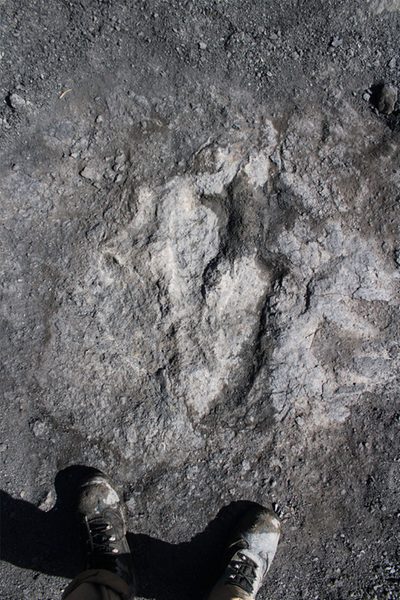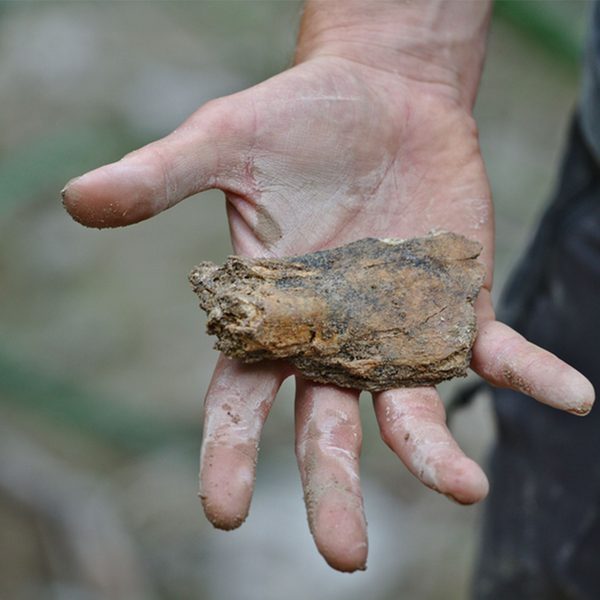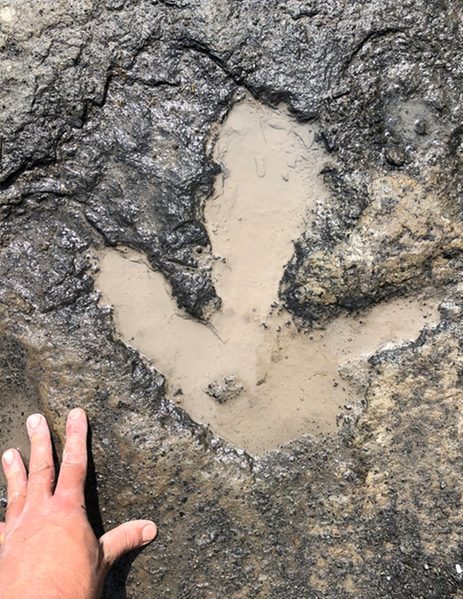Massive predators from the prehistoric world have left their mark in the northern Skåne region of Sweden, revealing a surprising glimpse into the past.

The discovery of approximately 200-million-year-old footprints of large predatory dinosaurs, along with skeletons of other dinosaurs, animals, and plant fossils in the Norra Albert clay pit has astonished researchers.
The findings challenge previous knowledge, indicating that large carnivorous dinosaurs existed much earlier than previously believed.
Initially, the researchers were skeptical about the age of the footprints, assuming there might be an error in dating.

However, subsequent discoveries, including well-preserved bones and fossils from the same period, confirmed that the footprints are indeed from the Late Triassic period, approximately 203 million years old. This revelation places large predatory dinosaurs in the region much earlier than anticipated.
The unearthed fossils include parts of skeletons, plants, and even fossilized feces, all dating back to the end of the Triassic geological period, just before the transition to the Jurassic period.

This finding is unexpected, as previous discoveries globally suggested that dinosaurs from this period were relatively small. The large predatory dinosaurs found in Skåne are among the oldest discovered, pointing to a different reality than previously understood.
Although complete skeletons are lacking, researchers have identified at least three new species of dinosaurs previously unknown to science.
Approximately 90 percent of the collected bone material belongs to a fairly large predatory dinosaur, and other bones, including a set of large teeth, suggest the presence of an even larger predator.

The discoveries also include herbivorous dinosaurs, fossils, and remains from various animals and plants of the period.
The unique opportunity presented by the Skåne discoveries allows researchers to study and reconstruct the habitat of this ancient period.
The wealth of fossils from diverse organisms will contribute to a better understanding of the evolutionary changes in ecosystems during the transition from the Triassic to the Jurassic period.
The Skåne region provides a valuable opportunity to explore the questions surrounding the dominance of dinosaurs in land-based ecosystems during this critical period of Earth’s history.
The extensive excavations led by Grzegorz Niedzwiedzki, a researcher at the Department of Organismal Biology, have yielded spectacular results, emphasizing the importance of large-scale excavations.
The findings in Skåne offer a unique collection of fossils from one locality, including plant and dinosaur fossils, highlighting the scientific significance of the region.
The ongoing research will likely provide further insights into Earth’s ancient history, contributing to our understanding of the diverse and dynamic life that once inhabited the planet.





